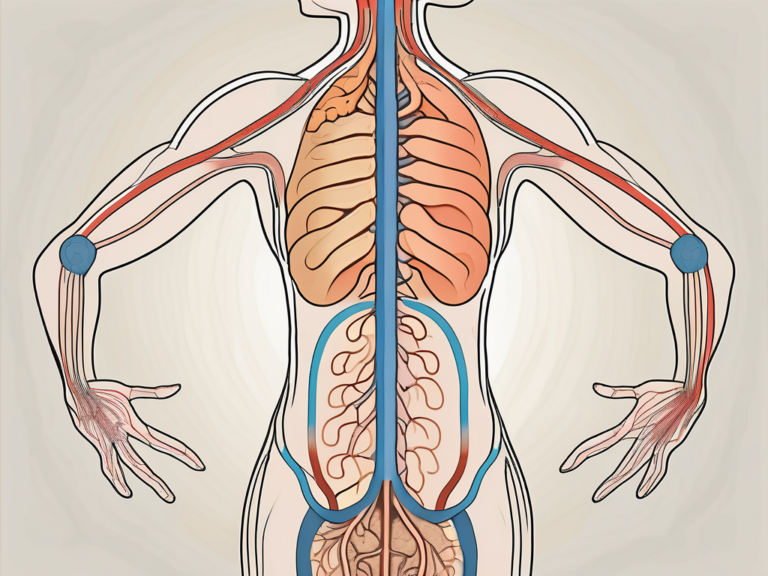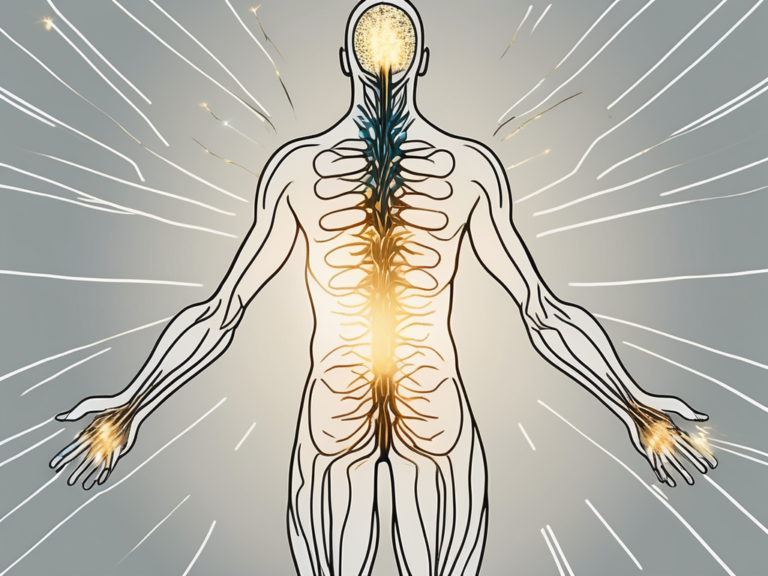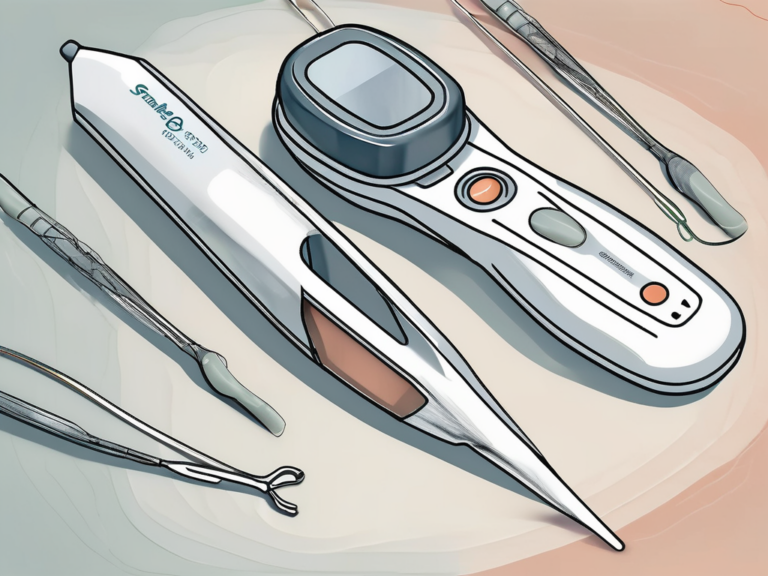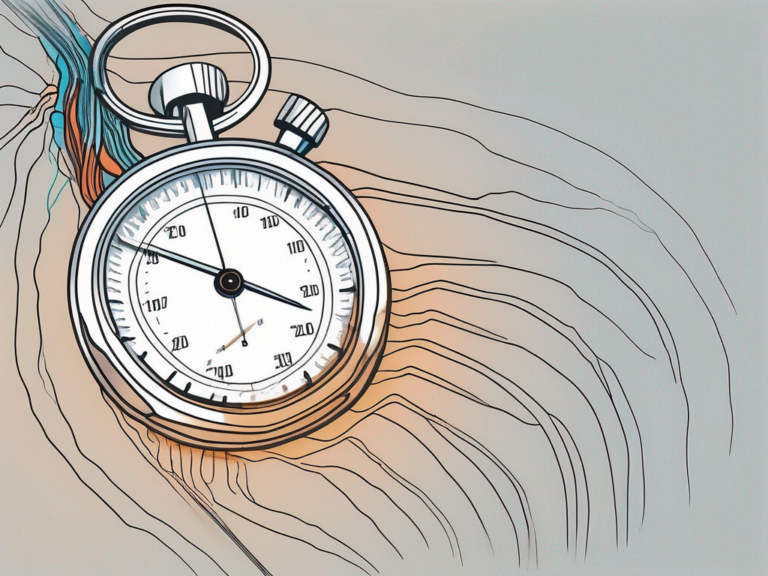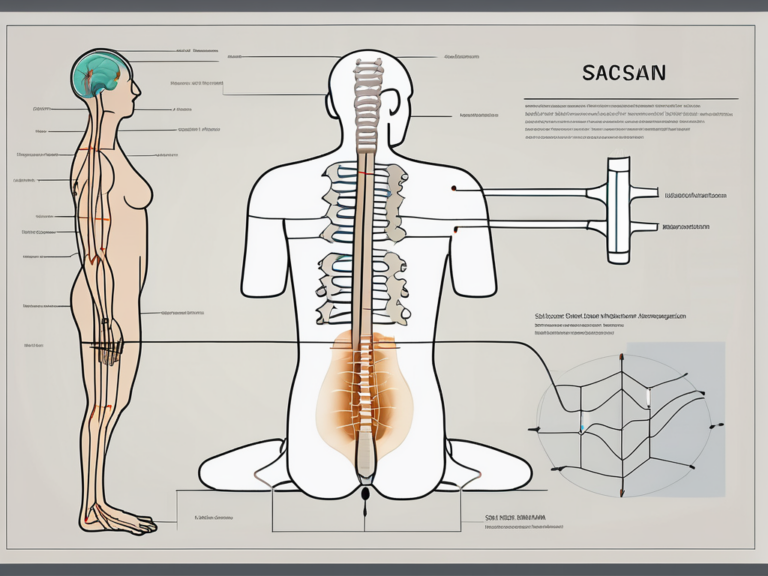Where Does the Sacral Nerve Originate From?
The sacral nerve is a crucial component of the nervous system, playing a vital role in the functioning of various organs and muscles in the lower body. In this article, we will delve into the origins, anatomy, functions, and disorders related to the sacral nerve. Understanding this complex network can provide valuable insights into the diagnosis and treatment of sacral nerve-related conditions.
Understanding the Sacral Nerve
The sacral nerve, also known as the sacral plexus, is a collection of nerves that arises from the lower part of the spinal cord. This network of nerves extends from the lumbar region, specifically L4 to S4, and plays a significant role in the innervation of the pelvic region, lower limbs, and some abdominal muscles. By facilitating communication between the brain and various parts of the lower body, the sacral nerve enables voluntary and involuntary movements, including walking, urination, and sexual function.
The sacral nerve is a fascinating component of the peripheral nervous system, intricately involved in the complex web of connections that allow us to navigate the world around us. Let’s delve deeper into the definition, function, and anatomy of this remarkable nerve.
Definition and Function of the Sacral Nerve
The sacral nerve, as part of the peripheral nervous system, is responsible for transmitting sensory and motor signals between the brain and lower body structures. Sensory fibers within the nerve facilitate the transmission of sensations such as touch, pain, and temperature, while motor fibers control the movement of muscles.
But the function of the sacral nerve goes beyond mere transmission of signals. It plays a crucial role in the regulation of bowel and bladder function, sexual arousal, and overall pelvic sensation. Without the sacral nerve, these essential bodily functions would be compromised, leading to a significant impact on quality of life.
Moreover, the sacral nerve contributes to the stability and coordination of lower limb movements. It ensures that our steps are steady, our gait is balanced, and our movements are fluid. It is the silent conductor, orchestrating the symphony of motion in our pelvis and lower limbs.
Anatomy of the Sacral Nerve
The sacral nerve consists of numerous nerve roots originating from the sacral spinal cord. These nerve roots merge to form the sacral plexus, a complex network of nerves that eventually separates into various branches, delivering signals to specific regions of the lower body.
Within the sacral plexus, five main nerves take center stage: the superior gluteal nerve, inferior gluteal nerve, sciatic nerve, posterior femoral cutaneous nerve, and pudendal nerve. Each of these nerves has its own role to play in motor control and sensation, ensuring the harmonious interplay of movement and sensory perception in the pelvis and lower limbs.
The superior gluteal nerve, for instance, innervates the gluteus medius, gluteus minimus, and tensor fasciae latae muscles, contributing to the stability and strength of our hips. The inferior gluteal nerve, on the other hand, supplies the gluteus maximus muscle, enabling powerful movements such as climbing stairs or running.
The sciatic nerve, the largest nerve in the body, branches out into the tibial nerve and common fibular nerve, providing sensation and motor control to the posterior thigh, leg, and foot. Meanwhile, the posterior femoral cutaneous nerve is responsible for transmitting sensory information from the skin of the posterior thigh and leg.
Lastly, the pudendal nerve, often referred to as the “nerve of pleasure,” is responsible for sexual arousal and sensation in the genital area. It is a vital player in our sexual experiences, ensuring that pleasure is transmitted and received with precision.
The intricate anatomy of the sacral nerve and its branches showcases the complexity and sophistication of our nervous system. It is a testament to the incredible design of the human body, allowing us to experience the world through movement and sensation.
The Origin of the Sacral Nerve
The development of the sacral nerve begins early in the embryonic stage. During this critical phase, the spinal cord undergoes specialization and segmental formation. The sacral nerve arises from the lumbar and sacral regions, with the roots fusing to form the sacral plexus.
Embryonic development is a fascinating process that sets the foundation for the intricate functioning of the human body. As the embryo develops, the spinal cord elongates and differentiates into different regions, one of which includes the sacral region. This region holds immense importance as it gives rise to the sacral nerve, a vital component of the peripheral nervous system.
Development of the Sacral Nerve in Embryonic Stage
During the embryonic stage, nerve cells proliferate and organize themselves into dorsal and ventral roots, which ultimately contribute to the formation of the sacral nerve. These roots play a crucial role in transmitting signals between the spinal cord and the sacral nerve, ensuring proper communication and coordination.
The intricate process of embryonic development involves a delicate interplay of genetic and environmental factors. The precise timing and sequence of events lead to the formation of a fully functional sacral nerve, ready to carry out its important functions in the human body.
As the embryo continues to grow and develop, the sacral nerve gradually takes shape, branching out and extending its reach to various parts of the lower body. This complex network of nerves allows for the transmission of motor and sensory signals, facilitating movement, sensation, and control in the sacral region.
This intricate process of embryonic development lays the groundwork for the proper functioning of the sacral nerve later in life. The formation of the sacral nerve is a testament to the incredible complexity and precision of human development.
The Spinal Cord and the Sacral Nerve
The spinal cord, a crucial component of the central nervous system, plays a pivotal role in connecting the brain to various parts of the body, including the sacral nerve. Located within the protective vertebral column, the spinal cord extends from the base of the skull to the lumbar region.
Motor and sensory information travels up and down the spinal cord, enabling communication between the brain and peripheral nerves, such as the sacral nerve. This intricate network of communication ensures that signals are transmitted accurately and efficiently, allowing for precise control and coordination of movements in the sacral region.
Without the spinal cord, the sacral nerve would be unable to carry out its essential functions. The spinal cord acts as a conduit for signals between the brain and body, ensuring proper coordination and functioning. It serves as a vital link, facilitating the transmission of information that allows us to walk, run, sit, and perform various other movements with ease.
The sacral nerve, intricately connected to the spinal cord, is a testament to the remarkable complexity and interdependence of the human nervous system. Together, they form a sophisticated network that enables us to navigate the world and experience the wonders of movement and sensation.
The Sacral Plexus: A Closer Look
The sacral plexus represents a complex network of nerves that arise from the sacral region of the spine. This intricate arrangement of nerves provides essential motor and sensory innervation to various structures in the lower body.
The sacral plexus is a fascinating network of nerves that plays a crucial role in the functioning of the lower body. Let’s take a closer look at its components and structure, as well as its role in nerve distribution.
Components and Structure of the Sacral Plexus
The sacral plexus consists of nerve roots originating from the anterior rami of spinal nerves L4 to S4. These nerve roots merge and form thick trunks, which give rise to the main nerves of the sacral plexus.
One of the main nerves originating from the sacral plexus is the superior gluteal nerve. This nerve supplies the gluteus medius, gluteus minimus, and tensor fasciae latae muscles, contributing to the stability and control of hip movements. Without the superior gluteal nerve, simple actions like walking or climbing stairs would be challenging.
In addition to the superior gluteal nerve, the sacral plexus also gives rise to the inferior gluteal nerve. This nerve innervates the gluteus maximus, the largest muscle of the buttocks. It plays a crucial role in movements such as hip extension and outward rotation, allowing us to perform activities like running or jumping.
Another significant nerve originating from the sacral plexus is the sciatic nerve. This nerve is the thickest nerve in the body and provides innervation to the posterior thigh muscles, as well as the muscles of the lower leg and foot. Without the sciatic nerve, essential actions like walking or running would be impossible.
As if that wasn’t enough, the sacral plexus also gives rise to the posterior femoral cutaneous nerve. This nerve supplies sensory innervation to the back of the thigh and lower leg, allowing us to perceive touch, pressure, and temperature in these areas.
Lastly, the pudendal nerve, originating from the sacral plexus, innervates the pelvic floor muscles, external genitalia, and perineum. This nerve plays a vital role in pelvic sensation and sexual function, ensuring proper functioning and pleasure.
Role of the Sacral Plexus in Nerve Distribution
The sacral plexus serves as a distribution center, ensuring that motor and sensory signals reach their intended destinations. The nerves originating from the sacral plexus collaborate to provide appropriate innervation to the muscles, skin, and organs in the pelvis and lower limbs, ensuring their proper function.
Without the sacral plexus, our lower body would be devoid of sensation and movement. It is truly remarkable how this intricate network of nerves works together to enable us to perform everyday activities with ease.
Next time you take a step or feel a gentle touch on your thigh, remember to thank the sacral plexus for its incredible role in keeping your lower body functioning optimally.
Disorders Related to the Sacral Nerve
While the sacral nerve is a resilient and essential part of the nervous system, various disorders can affect its structure and function. Understanding these conditions can aid in early detection and prompt treatment.
The sacral nerve, also known as the S1-S5 nerve roots, plays a crucial role in the functioning of the lower body. It is responsible for transmitting signals between the brain and the lower extremities, controlling movement, sensation, and various bodily functions.
One common disorder related to the sacral nerve is nerve compression, which occurs when the nerve roots are compressed or pinched. This can be caused by conditions such as herniated discs, spinal stenosis, or tumors. Nerve compression can lead to pain or numbness in the lower back, buttocks, or legs, making it difficult to perform daily activities.
In addition to nerve compression, sacral nerve damage can also occur due to trauma or injury. This can result in a loss of sensation or muscle weakness in the lower body, affecting mobility and overall quality of life.
Common Sacral Nerve Conditions and Symptoms
Conditions related to the sacral nerve can range from nerve compression and damage to inflammation and genetic disorders. Symptoms may include pain or numbness in the lower back, buttocks, or legs, bladder and bowel dysfunction, sexual dysfunction, and muscle weakness.
One specific condition that affects the sacral nerve is sacroiliitis, which is the inflammation of the sacroiliac joint. This condition can cause pain in the lower back and buttocks, often radiating down the legs. It can be caused by various factors such as infection, trauma, or autoimmune disorders.
Another condition is sacral agenesis, a rare genetic disorder characterized by the incomplete development of the sacrum. This can lead to abnormalities in the lower spine, affecting the sacral nerve roots and causing symptoms such as leg deformities and bowel and bladder dysfunction.
If you experience any of these symptoms, it is crucial to consult with a healthcare professional to determine the underlying cause and determine an appropriate course of action.
Diagnostic Procedures for Sacral Nerve Disorders
Diagnosing sacral nerve disorders requires a comprehensive evaluation, typically involving a combination of medical history assessment, physical examination, and specialized diagnostic tests. Magnetic resonance imaging (MRI), nerve conduction studies, electromyography (EMG), and sensory testing may be employed to accurately diagnose these conditions.
An MRI scan can provide detailed images of the sacral nerve roots and surrounding structures, helping to identify any abnormalities or signs of compression. Nerve conduction studies and EMG can assess the electrical activity and function of the sacral nerve, aiding in the diagnosis of nerve damage or dysfunction.
Sensory testing involves assessing the patient’s ability to perceive touch, temperature, and vibration in specific areas innervated by the sacral nerve. This can help determine the extent of sensory impairment and guide treatment decisions.
It is important to remember that only a qualified healthcare professional can provide a definitive diagnosis and recommend appropriate treatment options. Early detection and intervention can significantly improve outcomes and prevent further complications associated with sacral nerve disorders.
Treatment Options for Sacral Nerve Disorders
Identifying and treating sacral nerve disorders typically involves a multidisciplinary approach, incorporating various conservative and surgical interventions. These treatment options aim to alleviate symptoms, improve functionality, and enhance the overall quality of life for individuals with sacral nerve disorders.
Non-Surgical Treatments for Sacral Nerve Issues
For less severe cases, non-surgical interventions may be recommended. These treatment options focus on managing symptoms and promoting healing without the need for invasive procedures.
Physical therapy is often a cornerstone of non-surgical treatment for sacral nerve disorders. A skilled physical therapist can design a customized exercise program to strengthen the muscles surrounding the sacral nerves, improve flexibility, and enhance overall mobility. Additionally, physical therapy may include techniques such as manual therapy, heat or cold therapy, and electrical stimulation to provide pain relief and promote healing.
In conjunction with physical therapy, medication management plays a crucial role in alleviating pain and inflammation associated with sacral nerve disorders. Nonsteroidal anti-inflammatory drugs (NSAIDs) may be prescribed to reduce inflammation and relieve pain. In some cases, muscle relaxants or nerve pain medications may be recommended to target specific symptoms and improve overall comfort.
Lifestyle modifications can also be beneficial in managing sacral nerve disorders. These modifications may include weight management, adopting proper body mechanics, and avoiding activities that exacerbate symptoms. Additionally, the use of assistive devices, such as braces or orthotics, may provide support and stability, reducing strain on the sacral nerves.
Non-invasive techniques, such as nerve stimulation and acupuncture, have shown promise in providing relief for some individuals with sacral nerve disorders. Nerve stimulation involves the use of electrical impulses to modulate nerve activity and reduce pain. Acupuncture, on the other hand, targets specific points on the body to stimulate the release of endorphins, natural pain-relieving chemicals.
It is important to note that the choice of treatment will depend on the specific condition and the individual’s unique circumstances. Consulting with a healthcare professional specializing in nerve disorders can provide valuable guidance and tailored treatment plans.
Surgical Interventions for Sacral Nerve Disorders
In cases where conservative measures do not provide sufficient relief or if the condition is severe, surgical interventions may be necessary. Surgical options can range from decompression procedures to repair nerve damage to more complex surgeries, such as nerve grafting or neuromodulation techniques.
Decompression procedures aim to relieve pressure on the sacral nerves by removing any structures that may be compressing them. This can involve removing bone spurs, herniated discs, or other sources of compression. By alleviating the pressure, these procedures aim to restore normal nerve function and reduce pain and other symptoms.
In cases where nerve damage has occurred, nerve grafting may be considered. This procedure involves taking a healthy nerve from another part of the body and using it to repair or replace the damaged sacral nerve. Nerve grafting aims to restore nerve function and improve symptoms, allowing individuals to regain normal functionality and quality of life.
Neuromodulation techniques, such as sacral nerve stimulation or dorsal root ganglion stimulation, involve the use of implanted devices to deliver electrical impulses to the sacral nerves. These electrical impulses can modulate nerve activity and provide pain relief. Neuromodulation techniques are often considered when other treatments have failed to provide sufficient relief.
As with any surgical procedure, it is essential to consult with a qualified healthcare professional to assess the risks and benefits and determine the most appropriate course of action. They will consider factors such as the individual’s overall health, the severity of the condition, and the potential for long-term success.
The Future of Sacral Nerve Research
Research into the sacral nerve continues to advance, paving the way for innovative treatment modalities and enhanced understanding of nerve-related disorders.
Advances in Sacral Nerve Treatment
Ongoing research focuses on developing targeted interventions for specific sacral nerve disorders. The exploration of regenerative medicine, nerve modulation techniques, and advancements in surgical approaches contribute to improving outcomes and quality of life for those affected by sacral nerve-related conditions.
Potential Implications of Sacral Nerve Research
Further research into the sacral nerve and its interconnected networks can potentially have far-reaching implications in the fields of neurology, urology, gynecology, and orthopedics. By unraveling the complexities of the sacral nerve, researchers aim to revolutionize treatment approaches and develop novel therapeutic strategies.
In conclusion, the sacral nerve, a vital component of the nervous system, originates from the lower part of the spinal cord. It facilitates communication between the brain and various structures in the lower body, contributing to voluntary and involuntary movements, sensory perception, and organ function.
If you suspect any issues related to the sacral nerve, it is essential to consult with a healthcare professional experienced in neurological disorders. Only an expert can provide an accurate diagnosis, recommend appropriate treatment options, and guide you towards a path of improved well-being.

